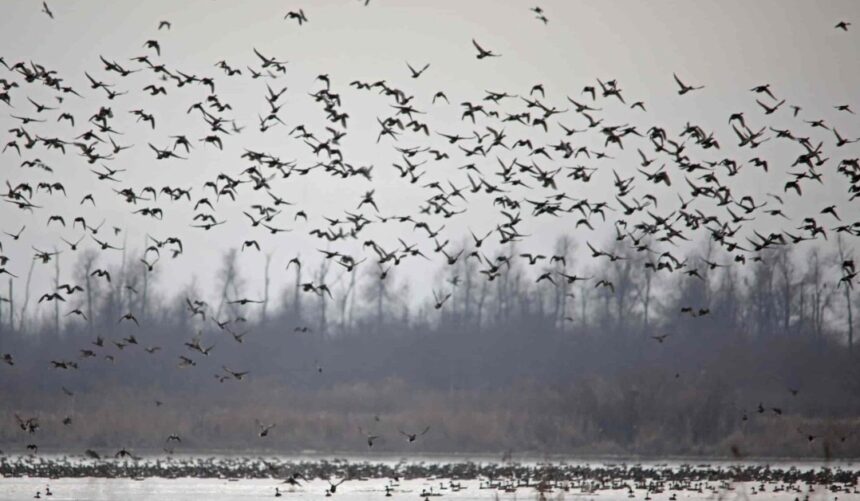Wetlands Witness Remarkable Resurgence
Scheduled from February 15 to 20, the census aims to provide accurate data on the region’s bird populations. According to Altaf Hussain, Wildlife Warden Wetlands, the improving temperature has significantly contributed to the surge in migratory birds.
The upcoming census builds on the encouraging increase in guest bird numbers observed over the past two years. “Our wetlands currently host a substantial bird population,” Hussain noted. “We anticipate numbers comparable to last year’s tally.”
Past censuses have yielded a remarkable tally of over 1.2 million birds. This count spans Kashmir’s varied wetlands. The census will highlight the region’s significance as a crucial haven for avian life.
Water Regulation Breakthrough at Hokersar Wetland
“These gates have enabled us to inundate areas that had lain dry for decades,” Hussain explained. “As a result, we’ve naturally restored crucial wetland habitats and prevented further encroachment.”
Focus on Habitat Restoration in Other Key Wetlands
The Department of Wildlife Protection’s scope extends far beyond Hokersar. Simultaneously, the department is channeling efforts towards other vital wetlands, including Haigam and Shalbugh. In these areas, habitat restoration is a pressing priority, driving conservation initiatives.
Hussain acknowledged that siltation and waste accumulation are significant threats to these delicate ecosystems. A robust and multi-faceted strategy is currently being crafted to proactively address and effectively mitigate these pressing issues. And to revive the ecological harmony of these precious wetlands further.
The Significance of Kashmir’s Wetlands for Migratory Birds
Kashmir’s wetlands play a vital role as key stopover sites for migratory birds traversing the Central Asian Flyway. This major avian migration route spans across Eurasia, connecting breeding grounds in the Arctic with wintering grounds in the Indian subcontinent and beyond. These wetlands provide essential feeding and resting grounds, allowing birds to replenish their energy reserves before continuing their long journeys.
The annual winter migration to Kashmir brings a diverse array of avian species, creating a spectacle of color and activity. The Hygam Wetland in north Kashmir has emerged as a premier sanctuary, attracting a staggering 300,000 birds from more than 25 distinct species this winter. This remarkable influx has solidified Hygam’s reputation as a critical habitat for avian populations.
The Asian Waterbird Census: A Vital Conservation Tool
The upcoming bird census in Kashmir is part of the larger Asian Waterbird Census (AWC), an integral component of the global International Waterbird Census (IWC). This initiative plays a crucial role in supporting the conservation and management of wetlands and waterbirds worldwide.
The AWC, typically conducted between January 4 and 19, welcomes data collected from December to February. The collected data helps identify and manage internationally important sites. It also promotes national waterbird and wetland conservation efforts. Furthermore, it fosters international cooperation in these critical areas.
By participating in the Asian Waterbird Census (AWC), Kashmir contributes to a global effort. This effort aims to protect essential ecosystems and the remarkable birdlife they support.







